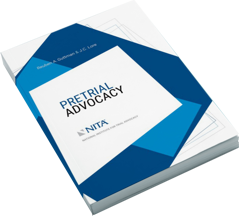Last month, Aetna announced that it would drastically reduce its participation on the Affordable Care Act (ACA) exchanges in 2017 because of larger-than-expected losses: it will go from 15 states to four. This follows similar decisions by UnitedHealth Group and Humana. As a result, more than one third of the exchanges next year will have only one participating insurer, so no competition at all. As early as May, even before the insurers’ announcements, analysts were predicting double-digit premium increases in 2017.
Why is this happening?
The Obama administration, as well as stalwart supporters in the policy community, have rushed to assure us that nothing much is happening: some bumps along the way were to be expected in such a grand experiment, and the Department of Health and Human Services (HHS), working with other stakeholders, will make it right.
Maybe.
Keep in mind that the whole point of the ACA was to placate private, for-profit health insurers, the group that destroyed Hillary-care in the 1990’s. (Remember Harry and Louise?) The companies did not want to lose their customers in the individual market — the healthy and the wealthy — and those customers, who had qualified for insurance, wanted to keep it.
But before the ACA, something like 40 million Americans had no access to health insurance, let alone healthcare; many more were underinsured. People demanded better. Centrist Democratic leaders — today we would call them the political elite — were determined to show that everyone could be adequately covered by commercial health insurers competing in a private market. So they filled the ACA with features designed specifically to make the new system attractive to commercial insurers.
First and most important, the federal government subsidized premiums for those with incomes under 400% of the federal poverty level ($97,000 for a family of four in 2016) — taxpayer funds that went directly to insurers. In addition, the ACA included three different programs to protect insurers from unusually costly patients (and simultaneously to prevent companies from cherry-picking healthy customers). These were known as the three ‘R’s: reinsurance, risk corridors, and risk adjustment. Only risk adjustment, under which insurers with a higher proportion of healthy customers compensate those with a sicker cohort, is permanent; the other two programs expire at the end of the year.
In exchange for these protections, insurers were required to offer every plan at the same price to all customers — that is, all plans were community-rated, with limited adjustments only for age and smoking status. No more pre-existing condition exclusions — patients with chronic illnesses could be charged no more than healthy customers. This is far and away the most popular feature of the ACA.
Nevertheless, 3 years in, insurers are complaining of losses, and voting with their feet. To reverse the downward momentum, HHS is tweaking risk adjustment, and adding a program to reimburse costs over $2 million for a single individual (to be shared among insurers).
ACA supporters have more ideas: greater outreach to eligible young, healthy people; higher penalties for failure to enroll; fewer required benefits; narrower networks. Insurers would like to adjust ratings upwards by, for example, charging the oldest customers five times more than younger ones, instead of three times more; or obtaining government reinsurance for especially costly patients; Hillary has suggested higher taxpayer-funded subsidies, and perhaps a “public option”.
Many of these measures would increase the cost of exchange policies and/or reduce their value. But the current policies are not great insurance: premiums are high. In 2015, 86% of enrollees received subsidies. Only 2% of eligible families who did not qualify for subsidies enrolled. Moreover, many families cannot access the benefits they have paid for because of high out-of-pocket expenses, especially deductibles.
The average deductible for a silver plan in 2015 was $2,994 — this in a country where 46% of families could not manage $400 for an emergency without borrowing the money or selling something. The federal limit next year for out-of-pocket expenses (including deductibles and co-pays, but not premiums) for a family is $14,300.
Under the ACA, the goal for insurers is to price their policies low enough to attract the healthy, but high enough to cover the costs of the sick. But even with giant computers, Big Data, and armies of actuaries, that may not be possible. It is certainly not the standard insurance business plan.
Commercial insurance works by charging individuals enough to cover their risk (with something left over for profit). High-risk people often cannot buy insurance at all. No one sells ordinary flood insurance to homeowners in a flood plain. We have Medicare for elderly and disabled people because they couldn’t get private health insurance. Insurers want to keep their healthy customers, and let someone else — high-risk pools, charity, the government — take care of anyone who gets sick.
But remember this: health insurance is not healthcare. Insurers are simply middlemen: if they disappeared — or were paid simply to track claims — and replaced by a Medicare-for-all system, everyone could still access healthcare. It is not clear that the value added by the industry is worth the cost, estimated at $350 billion. Spending that money directly on healthcare could improve our health, and eliminating public subsides to private insurers would reduce the deficit.
Insurers who are dissatisfied with the ACA: Be careful what you wish for.
Caroline Poplin, MD, JD, is an attorney and internist in Bethesda, Md. She is a former staff internist for the National Naval Medical Center, and currently practices medicine part-time at the Arlington Free Clinic in Virginia. She also Of Counsel & Medical Director at Guttman, Buschner & Brooks PLLC.
